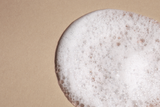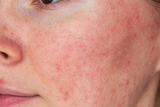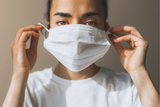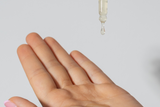Easy Peasy You
Natural glow: What other cosmetic brands don't tell you
Posted by Lara Schimweg on
Everyone is talking about glow . Everyone wants it. And there is a lot of advice. From the Korean layering technique to shiny facial oils, which are particularly popular in natural cosmetics . But what hardly anyone tells you is that all of these methods for more glow have their downsides. We question the methods for the "perfect glow" and tell you how you can get more glow without damaging your skin. Of course, as always, we also pay particular attention to sensitive skin.
Contents
What is Glow?
Glow is synonymous with healthy skin. The word describes skin that is free of spots, redness and other wounds or dry areas. At least in theory. The skin glows as if you had just come from sport or yoga. That is why make-up trends such as yoga skin and skin care goals such as "glass skin" have emerged in recent years.
Why so many people want the perfect glow
Behind this lies the desire for visually (almost) perfect skin that radiates health on the outside. Evolution has arranged it in such a way that we like it when the people around us radiate health, because that represents fertility. That is why the natural, healthy glow is so popular. There is nothing wrong with that - it's just that perfectly optimized skin should not be your goal. Healthy skin is not textureless, as we are led to believe thanks to Photoshop and filters on social media and in magazines. Every skin has its own individual pore size. This is largely determined by genetics. If you have had acne, your skin may have a few more enlarged pores, scars and more texture. Rosacea skin is a little redder here and there or has a few bleedings and dilated blood vessels. With atopic dermatitis, there are more flakes in an acute flare-up. And hyperpigmentation also occurs on healthy and radiant skin. That's the way it is - and we think it's a good thing. It makes us unique. True beauty always has something imperfect about it.
Natural glow or perfect glow? There are extreme differences. In this article you will get tips on how to get a healthy, natural glow without irritating your skin and working against the health of your skin. Especially with sensitive skin, the skin barrier must not be irritated just to achieve a perfect optical result.
You may also be asking yourself these questions: How do I get a beautiful glow without irritating my skin? Which methods are suitable for sensitive skin? We will answer these questions in this article.
But remember: Nobody looks freshly peeled out of the shower every day and that's totally fine. However, a healthy, natural glow is possible.
Glow: What methods are there?
There is no one miracle cure for glow. There are many ways to get to Rome. Each method has its strengths and weaknesses. We will examine these below.
Glow through peelings
Maybe you've already experienced that your skin becomes very smooth and even after a peeling. The old, loose skin cells are removed and your skin reflects slightly in the sun. Many people interpret this as a glow. The new layer of skin was previously protected from environmental influences. So peelings work wonderfully when it comes to glow.
Nevertheless, you should be careful here. There are a few pitfalls when it comes to peeling . The skin flakes are also very useful for your skin. This is how your skin protects itself from environmental irritants. Once a month, it flakes off the old, used layer of skin. The older we get, the slower this process takes place. These loose skin flakes that are still attached to the skin prevent you from glowing a little. It is okay to remove them with a light peeling if you want to support the natural process. There are differences in peelings, however. Some help to support the skin's natural exfoliation process, while others can penetrate deeper and exfoliate the skin much more strongly. You should never exfoliate sensitive skin too hard. For sensitive skin, a pure, mild enzyme peeling is best, which only supports the natural exfoliation process. Enzyme peelings are the mildest type of peeling. You can do an enzyme peeling 1-2 times a week. In any case, you should stay away from mechanical peelings.
But even insensitive skin does not need to be exfoliated with highly concentrated, aggressive peels just because it can tolerate it better than sensitive skin. Mechanical peels can cause micro-injuries that are entry points for germs and can lead to inflammation. Just because your skin is more robust doesn't mean you should do everything. Even if excessive peeling is shown again and again on social media or in the media: With high-percentage acid peels such as AHA, you can achieve a visually appealing result in the short term, but you risk your skin health in the long term if you overdo it. It is often cavalierly recommended that such acids be used daily. Some people even use them twice a day. Even the strongest skin barrier will break and give up at some point. This can, for example, lead to perioral dermatitis after a while. The mildest acid is PHA .
An enzyme peel is the mildest solution and has a supportive effect without causing any damage. And there are a few other tricks you can combine to help you glow.
← Older Post Newer Post →
0 comments








